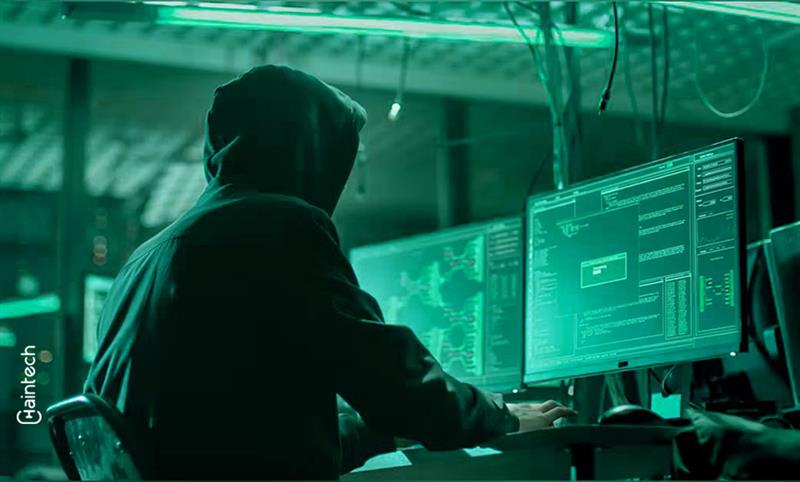1987: Hackers Breach Sprint Telecom System—Here’s What Happened

In 1987, a Sprint telecom engineer sat at his desk, sipping coffee and staring at the blinking lights on his control board. Everything seemed normal until it wasn’t. Suddenly, phones were ringing off the hook with complaints of weird calls, fake phone numbers, and even jammed emergency lines. It wasn’t long before they realized the truth—hackers had breached the system, gaining access to confidential codes and tampering with telecom operations.
This breach wasn’t just a random prank. It exposed serious vulnerabilities in the telecom infrastructure, making it clear that companies like Sprint and BellSouth weren’t as secure as they thought. So, how did hackers pull off one of the most notorious telecom breaches of the ‘80s? And what lessons did the industry learn from it?
Keep reading to find out.
The Shocking Story Behind the Sprint Hack
Around the mid 1980s, telecom companies such as Sprint and BellSouth were actively extending digital networks. They also came up with new technologies such as the ReMOB, which empowered the staff to off-site observation and management of calls. What sounded like great progress to many was well received, however, hackers now had a new playground.
In 1987, hackers discovered how they could gain control of these systems. With this, they exploited the ReMOB software to decode other secret codes and even tap important phone calls. What made this even scarier was the amount of access they were able to achieve, and for this reason, forward-looking companies were urged to strengthen their security measures against cyber threats. These were not simple phone calls; they were able to listen in to conversations between government departments, police, and even the 911 emergency services.
It would be interesting to hear a Secret Service call or, for instance, redirecting emergency calls. That was the opportunity that was available to those hackers, that kind of power. The announcement, which went viral, sent a shock down the spine of the telecom business.
What Went Wrong? Sprint’s Security Lapses
So, what allowed hackers to breach such a critical system? The answer lies in basic security oversights. At the time, telecom companies like BellSouth were using digital systems that weren’t properly secured. In some cases, systems didn’t even have passwords! That’s right, hackers could access critical systems just by knowing where to look.
Here’s a quick look at the key weaknesses that were exposed during the breach:
| Security Weakness | Impact | Affected Company | System Impacted | Year |
| No passwords | Hackers gained easy access | BellSouth | AIMSX computers | 1987 |
| ReMOB software flaws | Allowed eavesdropping on sensitive calls | Sprint | ReMOB software | 1987 |
| Fake phone numbers | Created bogus numbers for illegal activities | BellSouth | Digital databases | 1987 |
| Lack of monitoring | No tracking of unauthorized system access | BellSouth | Switch stations | 1987 |
| 911 system vulnerability | Emergency services put at risk | BellSouth | 911 software | 1987 |
These security flaws made it easy for hackers to slip into the systems unnoticed. The lack of monitoring and weak password protocols allowed them to tamper with telecom databases and create fake phone numbers. It wasn’t just about spying on calls—they could manipulate the entire phone system.
Impact on Public Safety: A Close Call
Perhaps the most frightening aspect of this breach was how it endangered public safety. The telecom systems weren’t just responsible for handling regular phone calls—they also managed emergency services like 911. Hackers had the ability to jam 911 lines, reroute calls, or even listen in on emergency conversations.
It’s terrifying to think about, but hackers could have caused a lot of damage. For instance, they could jam the 911 system by overwhelming it with fake calls. In an emergency, every second counts, and clogging the lines could mean the difference between life and death.
Here are some key dangers exposed by the Sprint hack:
- Eavesdropping on emergency calls: Hackers could listen in on sensitive 911 conversations.
- Jamming emergency lines: By flooding the system with fake calls, hackers could disrupt real emergencies.
- Redirecting calls: Hackers could reroute emergency calls, preventing people from getting help.
- Impersonating 911 operators: They could also impersonate emergency operators, further complicating an already chaotic situation.
How the Telecom Industry Reacted
The incident at Sprint in 1987 was a rude awakening for the telephone industry. Once the security breach was brought to light, Sprint and BellSouth, as well as other telephone companies, rushed to apply and strengthen the resistant shields. The first step was to incorporate additional security precautions that were fairly impracticable at that time, such as those involving encrypted telephones and tighter passwords.
However, it was not only about going to deal with the immediate issues. The incident demonstrated a more proactive policy on the prevention of possible breaches. Telecommunications organizations understood that they should be engaged in periodic security checks, tracking authorizations and hacking attempts, as well as staff awareness on hacking worries.
Notably, some of the policy changes they undertook included the following post-recovery measures:
- Strengthening password protection: Passwords were included as part of basic security protocols as a means of restricting unauthorized personnel from accessing systems.
- System monitoring: The companies employed a real time surveillance system to monitor and deter unauthorized log ins to the systems.
- Encryption: To protect such confidential communications from being overheard, the information was encrypted.
- Employee education: Employees learn how to detect abnormal activities and adopt safe internet practices.
- Working alongside law enforcement: Telecoms actively assisted law enforcement agencies in apprehending hackers and enhancing security in their organizations.
Lessons Learned from the Sprint Hack
The Sprint hack of 1987 was a pivotal moment in cybersecurity history. It forced the telecom industry to recognize that no system is completely secure, and even the most advanced technologies can be vulnerable if they aren’t properly protected.
So, what can we learn from this breach?
- Basic security measures are critical: The absence of basic protections, like passwords, was one of the main reasons hackers were able to access the system so easily. Companies must invest in basic cybersecurity protocols to protect their systems.
- Monitoring is key: Regular system monitoring is essential for detecting and stopping hackers before they can do serious damage. Companies that monitor their systems are better equipped to respond quickly to a breach.
- Public safety is at stake: As this breach demonstrated, cybersecurity isn’t just about protecting business assets—it’s about protecting public safety. Systems like 911 are critical infrastructure and must be safeguarded.
- Collaboration matters: The breach showed that collaboration between private companies and law enforcement is essential. Working together can help track down hackers and prevent future attacks.
- Cybersecurity is an ongoing effort: Finally, the Sprint hack highlighted that cybersecurity isn’t something you can “set and forget.” It’s an ongoing process that requires constant vigilance, regular updates, and continuous improvement.
Why This Matters Today
You may perhaps be pondering the question, “That was the year 1987. Does this apply today?” Yes, it does. Looking at the specifics of the Sprint hack, it is important to understand that many of the issues might have occurred decades ago, yet they are still rather topical. Threats in cyberspace have become even more complex, so companies cannot relax at some point.
Now, we are rather tightly connected to digital outcomes as a fundamental component of our lives. In our day-to-day lives, we use the internet for operations in our banks, records, health care, and so many more. A breach in any of these systems could have horrifying results like the Sprint hack.
It is important to understand that no matter the advancements in technology the fundamentals to cyber security are still applicable. Proper password creation, utilization of encryption features, surveillance, and rendering knowledge sessions to the employees help check the hackers in our system.
The Lasting Impact of the 1987 Sprint Hack
The 1987 Sprint hack changed the way we think about cybersecurity. It showed us that even the most advanced systems are vulnerable if they aren’t properly secured. From weak passwords to unmonitored systems, the Sprint hack exposed critical flaws in the telecom infrastructure, putting public safety at risk.
Today, the lessons learned from this breach continue to shape the way companies approach cybersecurity. It’s a reminder that cybersecurity is an ongoing effort—one that requires constant vigilance, regular updates, and a commitment to staying ahead of emerging threats.
So, next time you think about your own digital security, remember the Sprint hack. It’s a powerful reminder of just how important it is to protect our systems from those who seek to exploit them.









